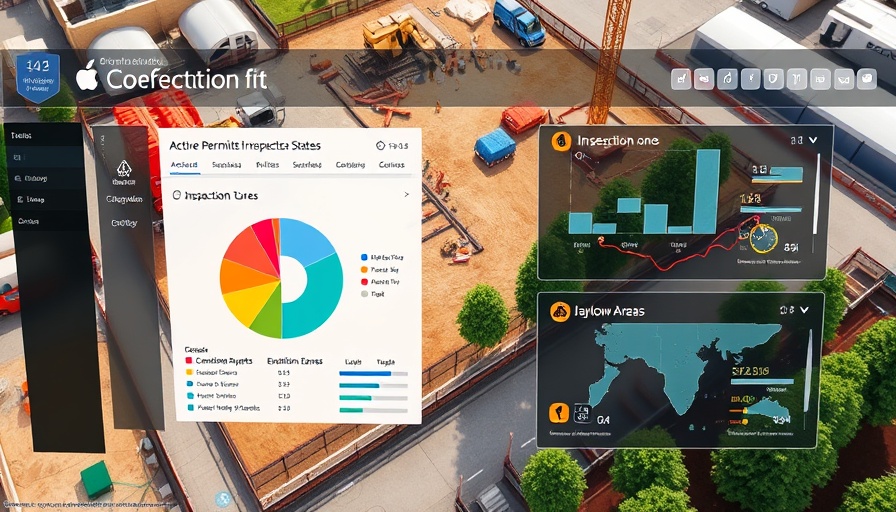
Unlocking the Future of Construction with Location Intelligence
Construction projects often seem like a logistical puzzle, requiring careful coordination and foresight to avoid missteps that can cost both time and money. Enter location intelligence — a transformative approach that holds the potential to change the way construction is managed and executed. Integrating location intelligence, particularly through systems like Esri's GIS technology, can fundamentally enhance the efficiency and safety of construction projects.
Why Location Matters
In construction, the success of a project hinges on meticulous planning and real-time data. Location intelligence gives construction teams the ability to visualize different elements of a project through geospatial data. From determining the best routes for material deliveries to assessing potential environmental impacts, having precise location data enables better decision-making and resource management.
As larger projects increasingly require adherence to safety and budget constraints, utilizing location intelligence can pivotally determine project success. Recent advancements show that embracing this technology can streamline processes, create effective communication between on-site workers and management, and ultimately enhance project outcomes.
The Digital Transformation: A Holistic Approach
Esri's GIS technology offers a holistic approach that bridges the gap between office and field operations. By ensuring that all teams work with a shared, data-driven project plan, the risk of miscommunication is reduced significantly. This integrated approach not only enables smoother workflows but also facilitates timely operations and resource allocation, which are crucial in fast-paced construction environments.
The realization of this data-driven infrastructure is evidenced in projects such as NEOM in Saudi Arabia, where GIS-assisted planning addresses geographical challenges before they become obstacles. This proactive strategy is poised to advance global construction practices significantly.
Optimizing Efficiency: Real-Time Monitoring
Efficiency in construction can often feel elusive, given the myriad of factors influencing a project’s timeline. However, Esri's location intelligence allows real-time monitoring and analysis of vital metrics, such as material usage and workforce deployment. With the power of geographic information, project managers can analyze deviations from the original schedule and respond immediately to any arising issues, keeping the project within budget and on track.
The Digital Handover: Why It Matters
A successful construction project doesn’t end when the final beam is placed; it transitions into a digital handover. Esri's approach includes creating a Digital Twin, a virtual representation of the project that is updated throughout its lifecycle. This ensures that information flow continues seamlessly post-construction, paving the way for ongoing collaboration with stakeholders.
This handover process builds trust and enables project owners to leverage detailed insights for future maintenance and operations. Such long-lasting relationships are invaluable as construction firms transition to service-oriented business models.
Harnessing AI with GIS for Predictive Insights
The integration of GIS with AI technology stands to elevate the construction industry even further. AI can analyze historical data to predict potential issues and optimize resource logistics. By processing extensive datasets, these technologies enable the anticipation of delays and other logistical challenges before they arise, offering construction projects a strategic edge in planning.
For example, employing machine learning algorithms helps assess site conditions, forecast labor needs, and identify efficient routes for material delivery — all critical components of successful project execution.
Building Safer Work Environments
With construction remaining one of the more hazardous industries, implementing GIS technology dramatically enhances worker safety. With detailed site maps, safety managers can pinpoint hazards and use predictive analytics to identify potential risks. Continuous monitoring through smart technologies further safeguards workers, aligning construction practices with evolving safety standards.
The potential of artificial intelligence combined with GIS data not only revolutionizes safety protocols but also empowers workers, helping them make data-informed decisions on the ground.
Looking Ahead: The Smart Future of Construction
The future of construction projects is undoubtedly heading toward more intelligent, efficient, and sustainable methodologies. By adopting location intelligence solutions, construction professionals are not only enhancing their operational capabilities but also placing themselves at the forefront of industry innovation. As construction challenges evolve, so too must the technologies we use to address them.
Your Role in the Future of Construction
Whether you are a contractor, project manager, or homeowner, understanding the significance of location intelligence can empower you to make better decisions. Embrace this revolutionary shift, familiarize yourself with the tools and technologies available, and prepare to engage more effectively with your construction projects.
In a rapidly changing industry, it is crucial to adapt and use data-driven insights to lead the way towards greater efficiency, safety, and collaboration in construction.
 Add Row
Add Row  Add
Add 




Write A Comment